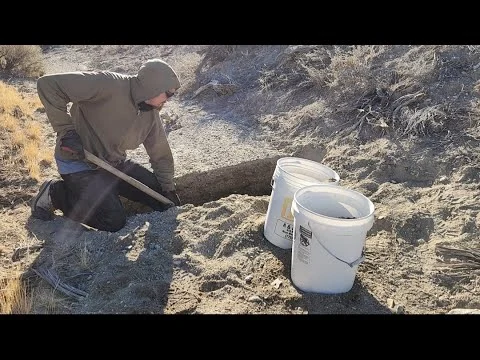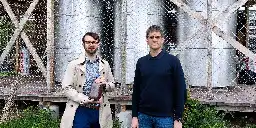Science
- Sitting too long can harm heart health, even for active peoplewww.sciencedaily.com Sitting too long can harm heart health, even for active people
More time spent sitting, reclining or lying down during the day may increase the risk of cardiovascular disease (CVD) and death, according to a new study. More than roughly 10-and-a-half hours of sedentary behavior per day was significantly linked with future heart failure (HF) and cardiovascular (C...
- 5 coincidences that make our existence possiblebigthink.com 5 coincidences that make our existence possible
There are a few small cosmic details that, if things were just a little different, wouldn't have allowed our existence to be possible

- Meteorite contains evidence of liquid water on Mars 742 million years agowww.sciencedaily.com Meteorite contains evidence of liquid water on Mars 742 million years ago
An asteroid struck Mars 11 million years ago and sent pieces of the red planet hurtling through space. One of these chunks of Mars eventually crashed into the Earth and is one of the few meteorites that can be traced directly to Mars. This meteorite was rediscovered in a drawer at Purdue University ...

- Did a protracted childhood precede larger human brains?

Discoveries about a young ancestor's teeth may shed light on the upward trend in brain size over millennia.
Other explanations
Bipedalism developed long before bigger brains, and the use of tools was widespread in earlier hominid branches. As a result, these causes have been ruled out as the main driving force in brain evolution, despite being essential preconditions. https://efossils.org/book/bipedalism-vs-brain-size
Preteen teeth
The recent study of the 1.77 Million-year-old remains of an 11 to 12-year-old early homo from the Dmanisi site in Georgia is relevant. https://phys.org/news/2024-11-fossil-teeth-childhood-prelude-evolution.html. This study of dental development throws some light on another human oddity, which is our very extended childhoods. The fossil's age places it close to the emergence of larger brains in our ancestors. A useful timeline is found here https://australian.museum/learn/science/human-evolution/larger-brains/
For context that's around this point in Human Evolution !
Modern Human life history is distinguished by a prolonged childhood in which mental and somatic development rates diverge. This slow development is crucial for developing high cognitive abilities in our socially complex species.
A slowing childhood in a supportive family that included grandparents
This individual experienced rapid growth in their first five years, faster than in apes. For example, their wisdom teeth fully emerged at 12 years of age compared to 17-24 today. This rapid growth was unexpected given the age of the fossil and its relationship to modern humans. However, the teeth did have a sequence of growth similar to modern humans. Marcia Ponce de León from the University of Zurich and co-author of the study commented "Milk teeth were used for longer than in the great apes and the children of this early Homo species were dependent on adult support for longer than those of the great apes". She suggests that "This could be the first evolutionary experiment of prolonged childhood".
It is believed that children's development slowed as cultural transmission increased, making the quantity of knowledge conveyed from old to young more crucial. This transmission would have allowed them to make greater use of available resources while developing more sophisticated behaviours, providing them with an evolutionary advantage.
The demands of large brains cause Humans to develop more slowly than our closest animal cousins. Energy directed toward the brain dominates the human body's metabolism early in life, which is possibly one other reason why humans develop at a rate more akin to a reptile than a mammal in early childhood. A five-year-old's brain is a real energy monster. It uses twice as much glucose as a fully grown adult. See https://www.sciencedaily.com/releases/2014/08/140825152558.htm
What does this explain?
However, just identifying some of the forces influencing the brain's evolution does not account for the emergence of more recent advances such as symbolic language. https://www.britannica.com/science/human-evolution/Language-culture-and-lifeways-in-the-Pleistocene Nonetheless, the brain's expansion was an essential precursor to the richness of human culture. Even in this early era of human evolution where children needed to mature rapidly, and life expectancy was low, adult care exerted a protective effect.
Additional Info
A variety of circumstances probably influenced brain development, including contributions from diverse hominid lineages with larger brains that were previously lumped into a single smaller smaller-brained species. Ian Tattersall provides a nuanced discussion of brain size and how it relates to humanities tangled origins in this 2023 article: Endocranial volumes and human evolution, https://pmc.ncbi.nlm.nih.gov/articles/PMC10517302/
- Question: What mineral/compound do modern arthropods use for their eyes (vs. Trilobites with their calcite lenses)?
I was searching online for quite a while this evening, chasing a half-remembered bit of trivia, that trilobites were supposedly unique in their use of calcite for their lenses, composing the ommatidia of their compound eyes.
It must be so obvious to scientists in the field of studying insects that they never mention it in their papers...
So, what compound(s) do modern arthropods use in their compound eyes. If it isn't calcite, what do modern 'bugs' use?
- MIT engineers make converting CO2 into useful products more practicalnews.mit.edu MIT engineers make converting CO2 into useful products more practical
A new electrode design developed at MIT boosts the efficiency of electrochemical reactions that turn carbon dioxide into ethylene and other products.
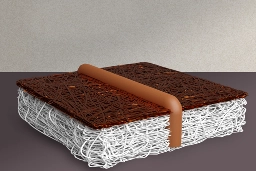
- Scientists Reveal Rare 450-Million-Year-Old Arthropod Fossil Preserved in Glittering Fool’s Goldwww.smithsonianmag.com Scientists Reveal Rare 450-Million-Year-Old Arthropod Fossil Preserved in Glittering Fool’s Gold
The critter found in New York represents a new, extinct species of arthropod that could shed light on the evolution of today's insects, crustaceans and spiders
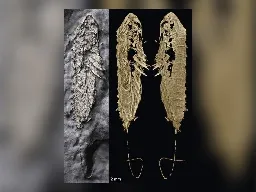
- Universe would die before monkey with keyboard writes Shakespeare, study findswww.theguardian.com Universe would die before monkey with keyboard writes Shakespeare, study finds
Australian mathematicians call into question the ‘infinite monkey theorem’ in new research on old adage

- Scientists find lesser mealworm's potential to combat plastic wastenews.cgtn.com Scientists find lesser mealworm's potential to combat plastic waste
Scientists affiliated with the Nairobi-based International Center of Insect Physiology and Ecology (ICIPE) on Monday announced the discovery of a promising solution to the plastic waste menace in the lesser mealworm.

According to Khamis, this is the first time that the African native smaller mealworms' ability to decompose plastics has been recorded.
She stated that while Africa generates only 5 percent and uses 4 percent of global plastic, there is an increase in the usage of single-use plastic, making the continent the second most polluted.
Khamis said scientists tested the ability of the lesser mealworm to consume polystyrene, one of the major microplastics that is fast accumulating both in land and water bodies.
- Science has finally cracked male riflebirds’ flirty secrets (cool video included in article)www.sciencenews.org Science has finally cracked male riflebirds’ flirty secrets
New video upsets the old notion that these birds of paradise use wing clapping to make percussive sounds while courting.

Males of the four Ptiloris species, a group within the birds of paradise native to Australia and New Guinea, have long fascinated biologists as well as female birds with their courtship displays. A male repeatedly fans out dark satiny wing feathers into a curved arc. He sways his head rhythmically and opens his mouth to a soundtrack of short, sharp thwacking sounds.
- Lignin molecular property discovery could help turn trees into affordable, greener industrial chemicalsphys.org Lignin molecular property discovery could help turn trees into affordable, greener industrial chemicals
Trees are the most abundant natural resource living on Earth's land masses, and North Carolina State University scientists and engineers are making headway in finding ways to use them as sustainable, environmentally benign alternatives to producing industrial chemicals from petroleum.

- Are you tasty to mosquitoes? Study offers clues into when and why they bitephys.org Are you tasty to mosquitoes? Study offers clues into when and why they bite
As mosquitoes and mosquito-borne illnesses like dengue fever spread across the world, researchers say that a key strategy to prevent these illnesses may be dissuading the insects from biting their victims in the first place. But while scientists have uncovered the ways that odor and heat help mosqui...

- Ideas with storing electrons and or light in a container
Storing electrons in a container
Maybe like how can fill a container with a gas like air could maybe do the same with each individual electron in a container.
Could perhaps emit each electron into a container maybe like how an electron emitter / electron gun can emit each electron from the negative electrode. Then maybe can be able to emit each electron into a sealed container to store each electron not attached to an atom. I guess an electron not attached to an atom are as a free electron. Which maybe can call this an electron bottle.
Should probably have the entire inner surface of the container be made out of a conductive material so can maybe be able to both add each electron into the container and to remove each electron from the container. Should probably ensure have an electrically insulative material surrounding the conductive surface so as to prevent emitting each electron outside of the conductive surface. With removing each electron should maybe have a diode to ensure each electron move a specific direction.
If for some reason each electron can go through the container then maybe should use a material for repelling magnetism maybe like a diamagnetic material like a superconductor or something else like pyrolytic graphite or bismuth. This way can perhaps repel magnetism of each electron which then perhaps repels each electron. A superconductor perhaps have a stronger repelling effect compared to something like pyrolytic graphite and bismuth. Which also perhaps pyrolytic graphite have a stronger diamagnetic effect than bismuth.
-
Maybe could even use something like copper or aluminum to maybe be able to repel each electron from each electron’s magnetism causing eddy currents with either type of material.
-
Maybe could even have a material that both repel magnetism like as a diamagnetic material and are easily able to make eddy currents perhaps due to being electrically conductive. Maybe like a superconductor or maybe pyrolytic graphite. I’ve heard bismuth are a superconductor around -273.15 C or -459.67 F. However perhaps at higher temperatures I guess bismuth lose electrical conductivity perhaps so perhaps like at room temperature 23 C or 73.4 F have very high electrical resistivity so are not ideal for eddy currents.
Which then with using a material for repelling each electron then it might be more difficult to be able to collect each electron. Could probably have a section of the electron bottle with no or at least less of a magnetism repelling effect which are as a conductive surface. Which then to perhaps have something like a removable magnetism repelling material, diamagnetic material behind on the outside of the conductive surface with less or no magnetism repelling effect. This way if the diamagnetic material are in the section with no or less magnetic repelling effect then maybe to repel each electron inside of the container. If to remove the diamagnetic material then maybe to allow each electron to conduct into the conductive surface which then perhaps can be collected.
Electron bottle: Energy generation
Another thing to mention is maybe since each electron always move maybe like with zero point energy then can maybe be used for generating energy.
Maybe for example since each electron emit electromagnetism then perhaps each electromagnetism could affect the conductive surface area to cause current and maybe even go through the electron bottle so can perhaps affect a coil to cause current that way. This way maybe can collect electric current without removing each electron. Though with just collecting current from the inner conductive surface then probably to have a higher chance of collecting each electron and perhaps especially more likely if the conductive surface does not effectively repel each electron.
Maybe either way if effectively repel each electron or not could maybe cause heat which can also maybe be another way to be used for energy. Maybe the heat could power a thermoelectric generator for electric current. Maybe even emit infrared light could power an infrared solar panel for electric current that way.
Also just to mention the conductive surface with the electron bottle that can perhaps act as an electrode like as a negative electrode to emit each electron in the container. I guess in order to effectively emit each electron should be heated up. So maybe another idea how how it could heat up is just by each electron inside of the container itself could perhaps heat up the container. Maybe like magnetism from each electron can heat up the conductive surface.
Maybe another idea could be to collect each electron to for example use with a circuit and then add each electron back into the container. Though this might have a higher chance of losing each electron being emitted from a circuit.
Below ideas regarding how to maybe affect each electron to move at a faster speed so can maybe generate more energy maybe like with each electron’s electromagnetism to induce more current. Perhaps to cause more heat maybe like with collision with inner wall of the electron bottle or electron’s electromagnetism to cause heat with the electron bottle:
Electron bottle: Other ideas with generating energy
Gravity / gravity wave to maybe be able to affect each susceptible electron to maybe move at a faster speed.
Movement of the electron bottle. Maybe if the electron bottle were to move to hit an electron with added movement speed. Or maybe with a material for reflecting magnetism like a diamagnetic material to maybe reflect each susceptible electron’s magnetism to reflect the electron away with more movement speed that way. Maybe like this could be caused from sound vibrations for example.
- Maybe similarly this could perhaps happen with heat since perhaps heat is vibration of each atom.
Light. If light can hit an electron then could maybe cause to move faster. Maybe with heat could make infrared light inside of the electron bottle to affect each susceptible electron that way. If can have a transparent electron bottle then could maybe more easily allow light from the outside into the container maybe like visible light. However with a transparent container maybe due to each electron emitting electromagnetism to be able to emit various spectrum of light that could be dangerous maybe like UV light to easily go through the transparent container. So perhaps an opaque container are ideal to perhaps block harmful light.
Electron bottle: Gravity waves
Maybe since an electron attracts gravity and if to move to make a gravity wave.
So maybe each gravity wave can have a push and pulling effect towards the direction the gravity wave are moving.
If to store electrons in an electron bottle then maybe since each electron constantly move maybe like with zero point energy then could constantly emit gravity waves maybe in many directions of the electron bottle. This way can repel matter from many directions of the electron bottle.
Maybe if for example have an electron bottle with a dense block of matter maybe like made of iron attached to the outside of the electron bottle then maybe each gravity wave that move towards the direction of the dense block of iron to push and pull on the dense block of iron to maybe cause to move towards the direction of the dense block of iron maybe like a thruster.
So for example maybe this could be useful for spaceship propulsion.
Electron bottle: Notes
Maybe heat from each electron maybe like with colliding with the inner wall of the container to maybe cause heat. With heat can maybe heat up the conductive surface / electrode of the container to maybe be able to emit each electron easier like as an electron emitter maybe like with both wanting to add or remove each electron.
Since each electron perhaps repel each other do to the same electric charge then maybe each electron reduce how effective can add each electron into the electron bottle. Which also maybe due to each electron repelling each other then maybe can force each electron closer to the inner wall of the container to for example cause more heat maybe by colliding with the inner wall and or from electromagnetism.
Electron bottle: Possible dangers
If to open the electron bottle with electrons inside then could perhaps be dangerous like maybe could cause burns like with human skin and blindness like with each human eye.
- Maybe similarly if to discharge each electron from the container quickly then maybe since each electron are moving through the conductive electrode to maybe cause heat which maybe could be harmful like with being able to burn like with human skin and even break the electron bottle maybe like with melting it which then perhaps suddenly release each electron stored in the container.
Storing light in a container
Maybe the higher spectrum of light the more difficult it is to store in a container. Maybe like with visible, microwave spectrum are difficult to store in a container. However maybe could more easily store lower spectrum of like the radio wave spectrum of light inside of a conductive container.
Maybe could for example for emitting the radio wave spectrum of light could have an antenna inside of a conductive container to emit each radio wave. Which the antenna should definitely be insulated from the conductive inner wall.
Could maybe call a container for storing light a light bottle.
Also just to mention maybe due to a superconductor not having a lot of resistance can be useful with storing light so as to maybe reduce energy loss from resistance.
Light bottle: Gravity waves
Maybe if a photon (I guess an individual light particle / wave) were to collide with another photon then maybe each photon to annihilate while making an electron and positron. Which just to mention a positron are perhaps the opposite charge to an electron.
Perhaps due to each electron and positron attracting gravity to then attract gravity and maybe if the electron and positron collide to make 2 photons and losing gravity maybe making a gravity wave.
So maybe this can be another way to make gravity waves using light.
Maybe information about photon reflecting off of another photon:
https://en.wikipedia.org/wiki/Two-photon_physics
Maybe also something related are Delbrück scattering:
https://en.wikipedia.org/wiki/Delbr%C3%BCck_scattering
Light bottle: Energy generation
Maybe similarly to with the electron bottle with generating energy using each electron maybe like with constantly moving like with zero point energy could maybe be similar with an electron and positron from a photon colliding with another photon. Which just to mention perhaps a positron also emit electromagnetism so perhaps could work similarly to an electron with generating energy. Which also perhaps due to an electron and positron being opposite charge to attract to each other and perhaps collide to annihilate to perhaps then emit 2 photons, maybe each as a radio wave as radio waves that collided from before. Which then perhaps lose emitting electromagnetism as before when there were an electron and positron.
Maybe another idea with generating energy from storing light in a light bottle could be from each photon directly maybe like also due to each photon constantly moving maybe like with zero point energy. Maybe could cause energy like heat, maybe current like with the radio wave spectrum of light without losing energy. Though I think maybe due to colliding with the interior of the light bottle to lose energy / amplitude maybe like as heat so maybe not easily able to use for energy that way.
Light bottle: Possible danger
If the container are suddenly opened releasing light then could perhaps be dangerous perhaps like with causing burns like with human skin and blindness like with each human eye.
- Which also should perhaps be careful to limit how much light discharge from the container as perhaps when discharging could cause heat with the light bottle which if too much heat could maybe cause damage and break the light bottle opening it maybe like from melting.
Light bottle or electron bottle: Note
With either an electron or light bottle should make sure the inner container are of a vacuum so can maybe reduce resistance and with causing heat and also so can perhaps have more storage space.
More information
More information about storing electrons and light and other information like with most likely aliens abducting and exploiting people as a resource in a text document called “Information about totalitarian and manipulative aliens.odt”, also with picture in the post perhaps also prove these aliens are real:
https://lemmy.world/post/18504237
-
Also there are links to a zip file and google drive folder that include other text documents files like video files referenced in the “Information about totalitarian and manipulative aliens.odt” document.
-
When mentioned storing electrons or light are near the bottom of the document “Information about totalitarian and manipulative aliens.odt”. Each title for storing electrons or light are in bold text with cyan highlight. Title in the document for storing electrons: "Storing electrons in a container" . Title for storing light in the document: "Storing light in a container".
-
- New research on anesthesia unlocks important clues about the nature of consciousnesswww.sciencedaily.com New research on anesthesia unlocks important clues about the nature of consciousness
New research on anesthesia has yielded important results about the physical basis of consciousness in the brain.

- The Rat Studies that Foretold a Nightmarish Human Futurewww.newyorker.com The Rat Studies that Foretold a Nightmarish Human Future
At first, scientists just wanted to figure out the best way to kill these pests. Then they decided that studying rat society could reveal the future of our own.

- Class 'Inequity' Fuels Air Ragewww.avweb.com Class 'Inequity' Fuels Air Rage
A little-known 2016 study by Princeton University researchers is getting attention again for a different take on why airline passengers are so grumpy these days. The study, titled “Physical and...

- If the Universe Is a Hologram, This Long-Forgotten Math Could Decode Itwww.quantamagazine.org If the Universe Is a Hologram, This Long-Forgotten Math Could Decode It | Quanta Magazine
A 1930s-era breakthrough is helping physicists understand how quantum threads could weave together into a holographic space-time fabric.
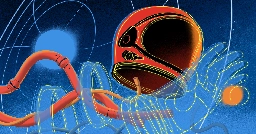
A 1930s-era breakthrough is helping physicists understand how quantum threads could weave together into a holographic space-time fabric.
- Airdropping vaccines to eliminate canine rabies in Texas – two scientists explain the decades of research behind its successtheconversation.com Airdropping vaccines to eliminate canine rabies in Texas – two scientists explain the decades of research behind its success
Two rabies epidemics in animals spurred a state health emergency in Texas and a program that oversees annual mass wildlife vaccination. Millions of doses have been distributed since the ‘90s.

> Two rabies epidemics in animals spurred a state health emergency in Texas and a program that oversees annual mass wildlife vaccination. Millions of doses have been distributed since the ‘90s.
- Platypus-like robot skin inspired by scientist's daughterwww.popsci.com Platypus-like robot skin inspired by scientist's daughter
The artificial sensor detects distant objects through ‘tele-perception.’
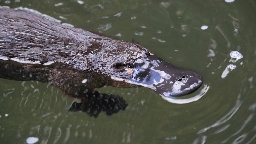
> Researchers have designed a robotic “artificial skin” that is as unique as the team’s animal inspiration—the platypus. Created by collaborators between China’s Tsinghua University and the Beijing Institute of Nanoenergy and Nanosystems, the dual-sensory system can interpret information not just from direct physical touch, but also through detecting electrostatic changes in the air around it.
Although I'm sharing the Popular Science article for easier reading, I'd recommend checking out the journal article it cites, as it gets into the details of the research. Best of all? Journal article's open access, so from what I can tell by checking between browsers, it's not paywalled!
- Time is not an illusion. It’s an object with physical size | Aeon Essaysaeon.co Time is not an illusion. It’s an object with physical size | Aeon Essays
Not a backdrop, an illusion or an emergent phenomenon, time has a physical size that can be measured in laboratories

- Global carbon capture and storage potential way overblown, study findsnews.mongabay.com Global carbon capture and storage potential way overblown, study finds
A new study finds that the potential for carbon capture and storage is much more limited, by a factor of five or six, than the capacity projected by the United Nations to fight climate change. The U.N.’s Intergovernmental Panel on Climate Change estimates a maximum of 30 gigatons of carbon dioxide c...

- CERN cuts ties with Russia, will expel hundreds of scientists by Decemberarstechnica.com CERN cuts ties with Russia, will expel hundreds of scientists by December
But Geneva-based organization will retain ties with Joint Institute for Nuclear Research.
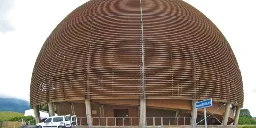
"The decision to end the cooperation agreement was taken in December 2023 when CERN's Council passed a resolution "to terminate the International Cooperation Agreement between CERN and the Russian Federation, together with all related protocols and addenda, with effect from 30 November 2024; To terminate ... all other agreements and experiment memoranda of understanding allowing the participation of the Russian Federation and its national institutes in the CERN scientific programme, with effect from 30 November 2024; AFFIRMS That these measures concern the relationship between CERN and Russian and Belarusian institutes and do not affect the relationship with scientists of Russian nationality affiliated with other institutes." The cooperation agreement with Belarus will come to an end on 27 June, before the Russian one ends."
- 5G Glass Antenna Turns Windows Into Base Stationsspectrum.ieee.org 5G Glass Antenna Turns Windows Into Base Stations
Compact, inconspicuous antennas could increase cell coverage transparently
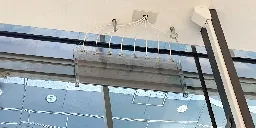
- Paper types ranked by likelihood of paper cutsphys.org Paper types ranked by likelihood of paper cuts
Via testing with a skin stand-in, a trio of physicists at Technical University of Denmark has ranked the types of paper that are the most likely to cause a paper cut. In an article published in Physical Review E, Sif Fink Arnbjerg-Nielsen, Matthew Biviano and Kaare Jensen tested the cutting ability ...

- Found: a brain-wiring pattern linked to depressionwww.nature.com Found: a brain-wiring pattern linked to depression
The disease has a consistent mark in the brain even when symptoms are absent.
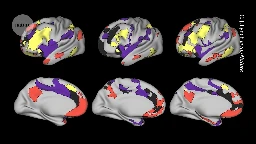
- Sleep on it: How the brain processes many experiences — even when ‘offline’news.yale.edu Sleep on it: How the brain processes many experiences — even when ‘offline’
In a new study, Yale researchers uncover how the brain, during sleep, replays and bundles many of the experiences that occur in our waking hours.
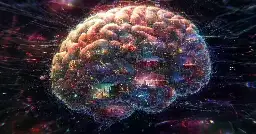
- In the Beginning, There Was Computationnautil.us In the Beginning, There Was Computation
Life is code, and code is life, in nature as it is in technology.

- Nontoxic ceramic could replace lead-based electronic componentsphys.org Nontoxic ceramic could replace lead-based electronic components
The ceramic produced in Prof. Igor Lubomirsky's lab at the Weizmann Institute of Science seemed too good to be true. It belongs to a class of materials that are the backbone of many essential technologies but that unfortunately also create an environmental problem because they usually contain lead, ...

- LLMs produce racist output when prompted in African American Englishwww.nature.com LLMs produce racist output when prompted in African American English
Large language models exhibit racial prejudices on the basis of dialect.
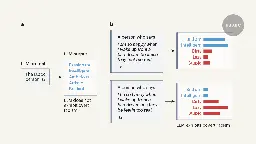
- The brain simulates actions and their consequences during REM sleepwww.biorxiv.org The brain simulates actions and their consequences during REM sleep
Vivid dreams mostly occur during a phase of sleep called REM. During REM sleep, the brain's internal representation of direction keeps shifting like that of an awake animal moving through its environment. What causes these shifts, given the immobility of the sleeping animal? Here we show that the su...

- Serotonin changes how people learn and respond to negative informationmedicalxpress.com Serotonin changes how people learn and respond to negative information
Increasing serotonin can change how people learn from negative information, as well as improving how they respond to it, according to a new study published in the journal Nature Communications.
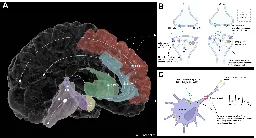
- Babies in Nigeria are being born with antibiotic resistant bacteria, researchers findtheconversation.com Babies in Nigeria are being born with antibiotic resistant bacteria
Resistance may have emerged from the increasing use of colistin in agricultural settings in Nigeria.

cross-posted from: https://beehaw.org/post/15471892
> In our latest study we found that samples taken from mothers and newborn babies younger than one week in Nigeria already had colistin-resistant bacteria present in their bodies. But neither the babies nor their mothers had been treated with colistin. > > Colistin is one of the last remaining antibiotics that is still effective in killing bacteria and fighting infections such as pneumonia. It is deemed critically important for human medicine by the World Health Organization. > > We surmise that mothers may have picked up these colistin resistant bacteria from the environment. We cannot speculate on the specific mechanism. The babies, meanwhile, could have picked up the bacteria from the hospital, the community, or from their mothers. It’s not yet known if these colistin-resistant bacteria stay in the mothers or babies – but if they do this may increase their chances of acquiring future drug-resistant infections.
- Sun Blasts Strong M9.8-Class Flare CME Earth-Directedwww.yahoo.com Sun Blasts Strong M9.8-Class Flare CME Earth-Directed
Sunspot AR3500 blasted a M9.8-class solar flare. NASA's Solar Dynamics Observatory captured footage of the flare in multiple wavelengths. Views from the ESA/NASA Solar and Heliospheric Observatory show an Earth-directed coronal mass ejection (CME) generated by the blast. Credit: Space.com | NASA/ESA...

- Study finds health risks in switching ships from diesel to ammonia fuelnews.mit.edu Study finds health risks in switching ships from diesel to ammonia fuel
Without additional regulation, burning ammonia in ship engines could cause serious impacts on air quality that could result in more than 600,000 additional premature deaths per year, according to new MIT research.

